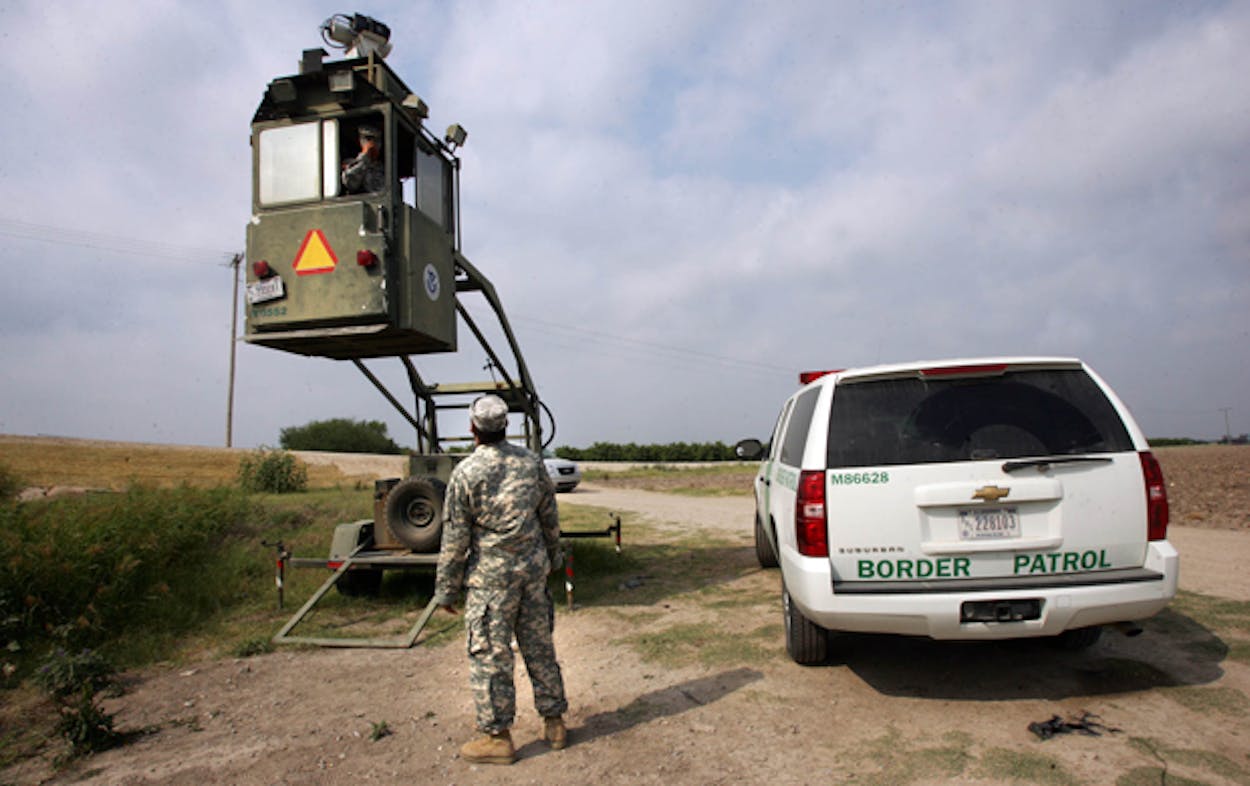While illegal border crossings are down overall, the number of unaccompanied children crossing the U.S.-Mexico border has curiously spiked in recent months. Licensed shelters that typically house these children are over max capacity, leaving federal officials to look for temporary solutions.
Both the Associated Press and the New York Times tackled the topic in weekend stories, noting that an empty dormitory at Lackland Air Force Base has been repurposed to house two hundred children on a temporary basis. Other temporary shelters have also popped up in San Antonio, including at a former YMCA downtown, Manny Fernandez wrote in the Times.
In the last six months, some 6,300 accompanied minors have been caught crossing the border. In a typical year, that number runs 7,000 to 8,000, according to Fernandez. In March alone the government saw 1,390 new arrivals.
The reasons for the uptick are not understood: “The kids are coming from the same places as usual — Guatemala, El Salvador, Honduras and Mexico — and they offer the same range of explanations: they made the trek to look for parents already in the U.S.; they’re seeking economic opportunity to send money home; they want to escape violence or abuse,” the AP’s Christopher Sherman reported.
“We’re talking to the children, but we don’t have one solid answer,” Lauren Fisher of the South Texas Pro Bono Asylum Representation Project told Sherman. “There seem to be the same reasons that we’ve seen before.”
Sherman explained how the process typically works:
Unaccompanied children are first processed by the Department of Homeland Security, and then turned over to the [U.S. Office of Refugee Resettlement] while the deportation process begins. Once in a shelter, the search begins for their relatives or an acceptable custodian, while nonprofit organizations try to match the children with pro bono attorneys. When a custodian is found, the child can leave the shelter and await immigration proceedings.
Jason Buch of the San Antonio Express-News noted that 88 percent of this children will be transferred to the care of family members.
But child welfare advocates are none too pleased about the temporary shelters, holding that these arrangements violate a 1997 settlement agreement that requires federal authorities to keep children in facilities licensed by the state. Texas officials are also concerned, Fernandez noted:
Texas child-welfare officials sent a letter to federal authorities, expressing concern that the San Antonio emergency shelters would probably not meet minimum licensing standards.
“We’re seeing emergency shelters becoming more and more of a norm because they just don’t have a plan, either to stop this at the country of origin or to handle this once the children are here,” Lucy Nashed, a spokeswoman for Gov. Rick Perry, said of the federal government. “You’re seeing them having to scramble to mitigate the effects of having an unsecured border.”
Sherman offered this description of life at the Lackland shelter:
The beige, nondescript four-story dormitory is located deep on the base. When children arrive, they are issued black duffel bags filled with clothing and are allowed two phone calls a week. Three-quarters of the children are boys, most between 14 and 17 years old.
Green cots were spaced two feet apart along the stark-white walls. A media room held a large flat-screen television and a video game console; there were also board games and an outside area with a basketball hoop and two soccer goals. The kids play outside for an hour each day.







